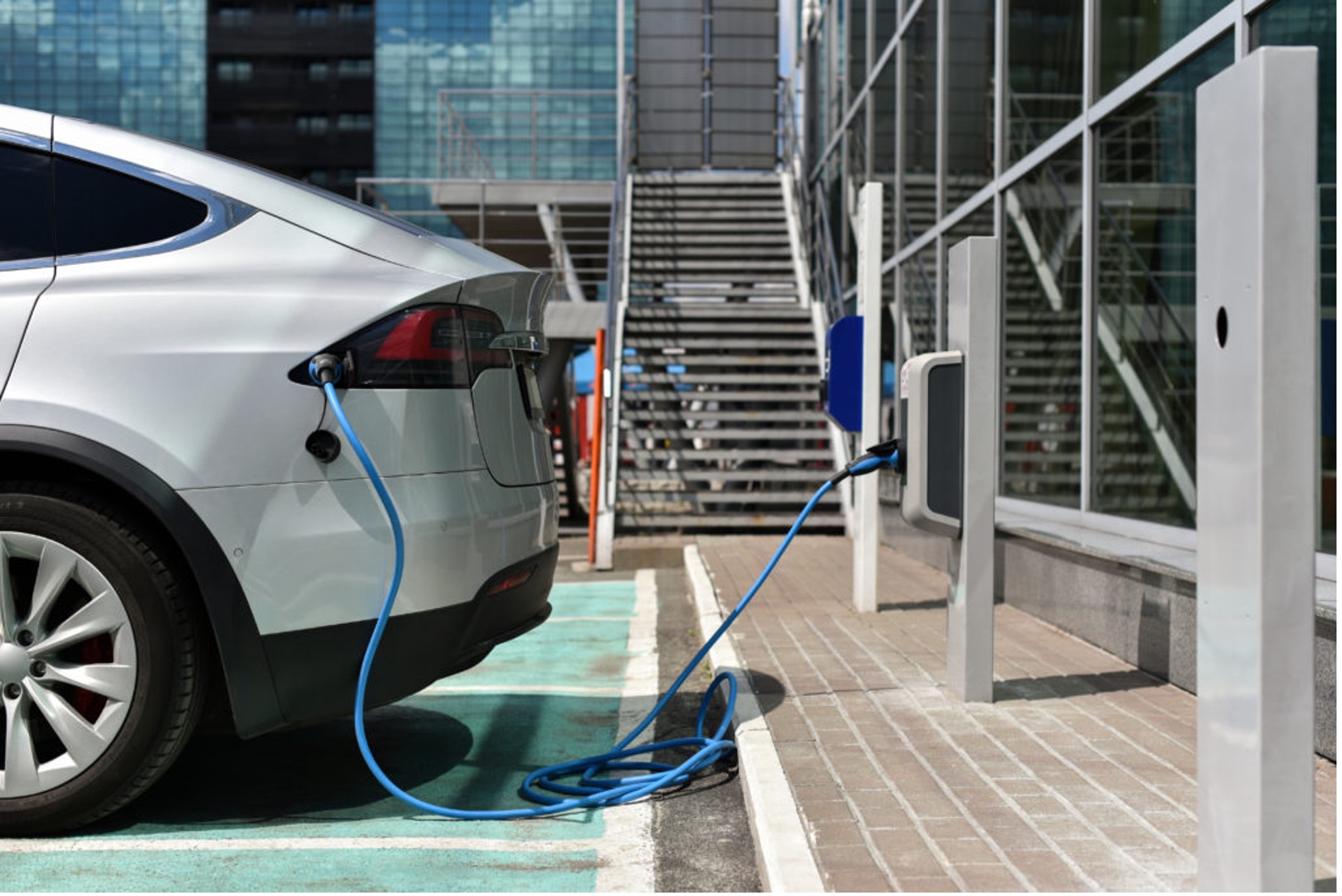Here are tips on renting an electric car.

Given the recent increase in U.S. gas prices, you may want to reconsider the type of car you rent on your next trip. Yes, choosing an electric vehicle (EV) can save you money because you won’t have to fill up a gas tank. But EVs don’t come cheap, and finding one to rent (and a spot to charge it) can be a challenge.
Where to rent an EV?
Although consumer demand for EVs is at an all-time high, they can be hard to find as a rental option. A check on Kayak, a popular rental car search site, for a seven-day rental a month from now returned zero available options for EVs in a number of major cities.
You may have more luck searching rental car companies’ websites directly. Hertz, Enterprise, National, and Alamo all include EVs in their fleets. For example, Hertz has a page where you can search for a Tesla rental, which the company offers at 22 airport rental locations across the country.
The easiest place to find a rental car is on Turo, a car-sharing company that allows owners to rent out their own cars. (I’ve written more about Turo here.) This may be the best way to make sure you’ll actually get the car you reserve. The site makes it easy to search for electric or hybrid cars in terms of what is available and when.
How much does renting an EV cost?
EVs are typically more expensive to rent than a standard economy rental car. Depending on the model you choose, you may wind up paying more to rent the EV than you would save on buying gas. However, if you’re able to find a hybrid car (such as a Prius) to rent, you’ll enjoy great gas mileage without having to overpay for the car itself.
You may find bargains on EV rentals on Turo. I searched for EVs available to rent in Denver and found an all-electric BMW i3 for $134 per day. (Note: a non-EV was still the cheaper rental option; a Kayak search for the same city and date found a compact car available for $73 per day.) If you’re planning on putting a lot of miles on your rental, the EV may be the better deal—In my example, you’d quickly make up the price difference between the compact car and the EV after filling up the gas-powered vehicle once or twice.
How to charge an EV?
There are three different ways to charge an EV; the type of charger you can use depends on the car type:
Level 1 vehicles: Can be charged through a regular 120-volt outlet. This type of charger takes the longest (often 40-50 hours for a full charge).
Level 2 vehicles: Requires an EV charging station. A full charge from empty takes anywhere from 4 to 10 hours, depending on car model.
Direct Current Fast Charging (DCFC) vehicles: Requires a Tesla connector, an SAE Combo connector, or a Chademo connector. This is the technology featured at Tesla Supercharging stations; it takes between 20 minutes to one hour to charge an EV to 80 percent.
Where to charge an EV?
Renting an EV will require a bit more trip-planning; you’ll need to identify stops where you can charge your car. If your wheels can use a Tesla charger, search Tesla’s website to find available charging stations. The U.S. Department of Energy also has a website where you can search for charging stations in the United States and Canada.
You may find free charging opportunities at your hotel, but if you’re recharging on the road, expect to pay for the privilege. Level 2 chargers, typically found at shopping centers, deliver a charge of up to 28 miles per hour at a cost of $1 to $5 an hour. If you’re charging at a DCFC station, expect to pay between $10 to $30 to charge your battery to almost full in around an hour.
Twist’s Take: Renting an electric vehicle will cost more and may be tricker to refuel than its gas-guzzling cousin.
